As we delve into the void of the cosmos, there’s one human comfort that astronauts have refused to leave behind – coffee. Yes, the daily ritual of brewing and savoring a cup of java isn’t limited to Earth alone. Welcome to the intriguing world of space coffee, where the art of cosmos brewing faces a fresh set of challenges and solutions.
In the serenity of the International Space Station (ISS), as the Earth rotates beneath them, astronauts enjoy their coffee in zero gravity, offering a unique twist to our beloved morning ritual. This article aims to traverse the remarkable journey of coffee in space, and how it symbolizes human adaptation and ingenuity beyond terrestrial confines.
From the early days of space exploration to the present, coffee has accompanied astronauts on their ventures into the unknown, providing a much-needed sense of familiarity and a morale boost. However, the process of brewing, consuming, and even tasting coffee becomes a complex science experiment under zero-gravity conditions. Join us as we embark on this fascinating exploration of the intersection of caffeine and the cosmos.
Coffee in Space: Key Takeaway
- Space Brewing Challenges: Brewing and consuming coffee in the zero-gravity environment of space presents unique challenges, from water behavior to containment and flavor preservation. Overcoming these challenges requires innovative designs and techniques, such as the ISSpresso machine and specially designed space coffee cups.
- Taste Perception in Space: The microgravity conditions in space can affect an astronaut’s sense of taste, often making foods and beverages like coffee taste blander. Coffee in space missions often needs to compensate for this sensory shift with stronger, richer flavors.
- Sustainability Concerns: With increasing lengths and frequency of space missions, the sustainability of coffee consumption in space is a growing concern. Innovations in biodegradable materials and closed-loop systems hold promise for a more sustainable future for space coffee.
- The Future of Space Coffee: As we look toward lunar and Martian missions, the future of space coffee is set to evolve. Possibilities include growing coffee plants in space habitats, private space companies contributing to cosmos brewing advancements, and even the dream of the first interplanetary coffee shop.
- More Than Just a Beverage: Despite the complexities and challenges, coffee holds a cherished place in space missions. It serves as a comforting ritual, a psychological tether to Earth, and contributes significantly to the mental well-being of astronauts. As we continue our journey into the cosmos, coffee remains a symbol of our adaptability and shared humanity.
From Ground to Orbit: The History of Coffee in Space
The history of space exploration is replete with remarkable feats of human ingenuity, and the inclusion of our beloved beverage – coffee – is no exception. Let’s take a look at how coffee has accompanied humans from the ground to the orbit.
Coffee and the Early Days of Space Exploration

In the nascent stages of space exploration, astronauts had to forego many earthly comforts, and unfortunately, freshly brewed coffee was among them. The initial solution was an unsatisfactory one – instant coffee packed in aluminum tubes. These tubes contained a freeze-dried coffee powder that astronauts could consume by adding water available on the spacecraft. Despite its practicality, this early version of space coffee failed to replicate the flavor and experience of a traditional earth-bound brew, signifying the need for an enhanced cosmos brewing method.
The Evolution of Coffee Consumption in Space Missions
As space missions became more advanced, so did the options for coffee. By the time of the Space Shuttle Program in the 1980s, space food technology had made significant strides, enabling astronauts to enjoy a slightly more sophisticated version of coffee. (1) They had access to a pouch of freeze-dried coffee to which they could add hot water via a specially designed port. This ‘wet’ coffee, though a significant improvement from the coffee tubes, still lacked the taste and aroma of a freshly brewed cup of coffee.

The real breakthrough came with the advent of the International Space Station. Thanks to international collaboration, especially with nations like Italy, known for their coffee culture, astronauts could look forward to better-caffeinated beverages. This push for better space coffee led to an exciting evolution of coffee in space.
Modern-Day Space Coffee: ISSpresso
The dawn of the ISSpresso machine marked a new era in cosmos brewing. A result of a collaboration between Italian coffee giant Lavazza, engineering company Argotec, and the Italian Space Agency, the ISSpresso is a specially designed espresso machine that operates under microgravity conditions. This device allows astronauts to make a variety of coffee drinks, from a simple espresso to a more complex caffe latte, right on the ISS. (2)
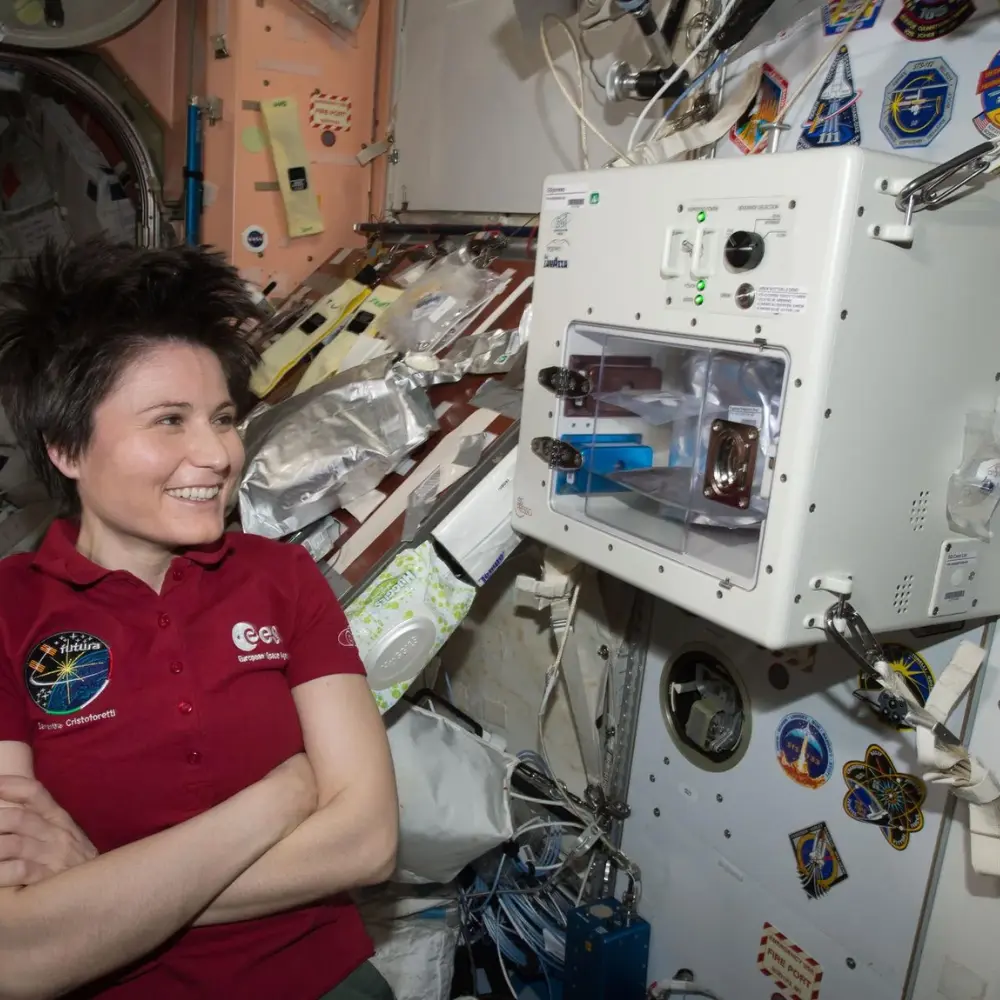
The ISSpresso heats water and forces it through a capsule of coffee grounds at high pressure, not unlike an Earth-based espresso machine. The coffee then dispenses into a special pouch, which astronauts drink from using a straw. This revolutionary development means that astronauts can now enjoy a taste of home, a true espresso, hundreds of miles above the Earth.
From instant coffee tubes to a dedicated espresso machine, coffee’s journey in space mirrors humanity’s own progress in exploring and adapting to the cosmos. The future of coffee in space promises even more intriguing possibilities as we continue to extend our reach into the universe.
Coffee Brewing and Consumption in Zero Gravity
When it comes to brewing and enjoying a cup of coffee, the laws of physics on Earth are our friends. Gravity assists the flow of water through the coffee grounds and into the cup, while the aroma of freshly brewed coffee wafts towards our noses. But when it comes to brewing coffee in the cosmos, the game changes entirely.
The Challenges of Brewing Coffee in Space
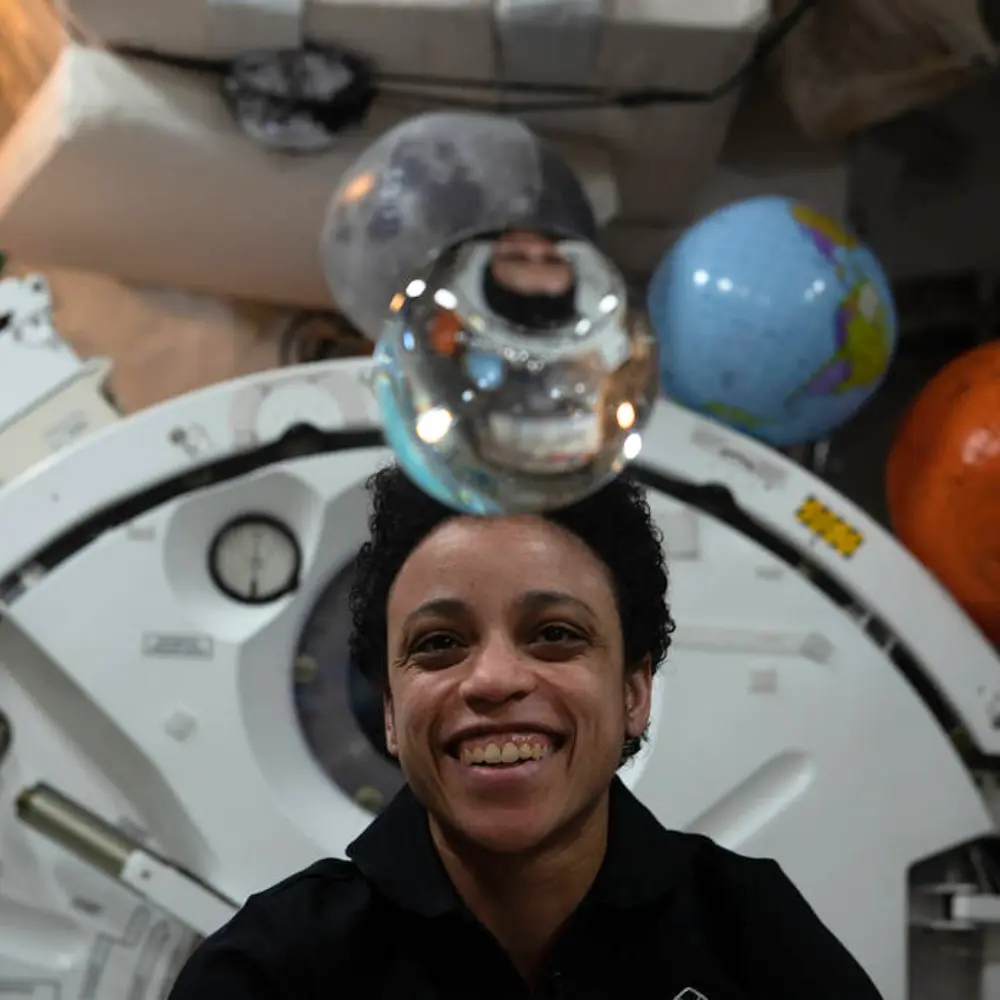
Cosmos Brewing presents a unique set of challenges due to the absence of gravity. Firstly, boiling water behaves very differently in space compared to Earth. Without gravity to draw steam upward, bubbles stay where they are, disrupting the uniform heating of water. Similarly, in zero gravity, water doesn’t flow but forms spheres due to surface tension, making it challenging to pass through coffee grounds as we do on Earth.
Besides, containment becomes an issue as fluids and loose coffee grounds can float around, posing a danger to both astronauts and the delicate electronics aboard the spacecraft. Also, maintaining the quality and taste of coffee is a significant hurdle, as the storage and brewing conditions are vastly different from what we’re accustomed to on Earth.
The Innovative Design of Space Coffee Cups
One of the most innovative solutions to tackle the challenges of coffee consumption in space is the specially designed space coffee cup. These cups are a remarkable blend of coffee connoisseurship and fluid dynamics.
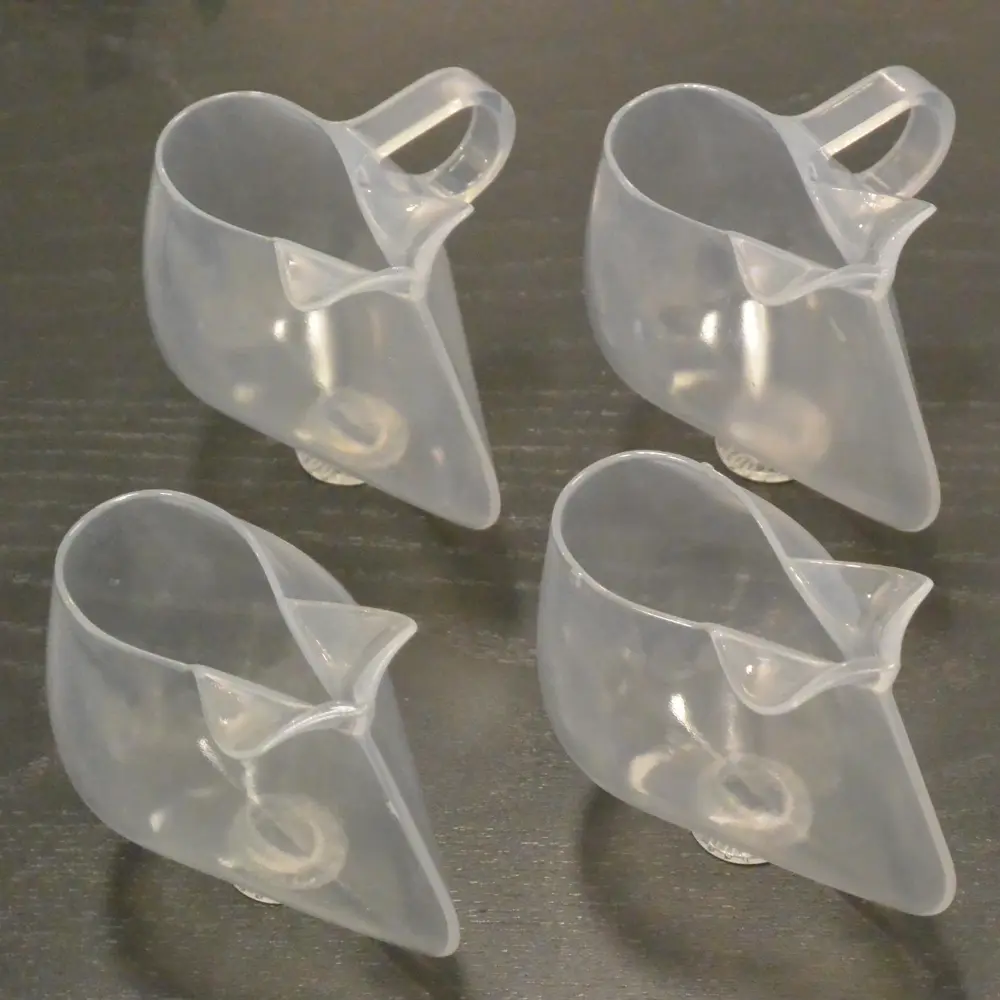
Unlike regular cups, space coffee cups are 3D-printed with a specific shape that exploits surface tension, wetting conditions, and the unique properties of the fluid in a zero-gravity environment. (3) The sharp inner corner of the cup helps drive the coffee toward the mouth through capillary action. This innovative design allows astronauts to enjoy their coffee in a cup, not a bag, which enhances the sensory experience and makes sipping coffee in space feel a bit more like home.
How Astronauts Actually Drink Coffee in Space
Despite the innovative space coffee cups, most of the time, astronauts drink their coffee from specially designed pouches with a straw to prevent spills in the zero-gravity environment. After brewing the coffee using machines like ISSpresso, the coffee is dispensed into these sealed pouches.

The straw used to drink coffee has a unique design with a clippable end to prevent the liquid from floating out in the microgravity environment. To drink, astronauts clip open the straw, sip their coffee, and then close it back to maintain a clean and secure environment.
The fascinating journey of brewing and consuming coffee in space is a testament to human ingenuity in adapting to the challenges of space life. As we continue our cosmic journeys, the art of cosmos brewing will only get more exciting and sophisticated.
Explore the fascinating realm of space coffee in Be Smart’s video, “This Is How Astronauts Drink Coffee In Space!” Discover the secrets behind brewing and enjoying coffee in microgravity as astronauts share their ingenious methods. Join this captivating exploration of astronautic caffeine rituals and witness the unique ways coffee is enjoyed beyond Earth’s boundaries. Watch the video below.
The Science of Taste: Coffee Flavor in Space
It might surprise you to know that coffee, one of the most beloved and flavorful beverages on Earth, tastes significantly different when consumed hundreds of kilometers above our planet. Let’s explore how space travel influences the taste of coffee and how the beverage contributes to astronaut morale and overall space mission success.
How Microgravity Impacts Taste Perception
The microgravity environment in space affects an astronaut’s body in various ways, including their senses. Taste is notably influenced by this zero-gravity condition. When astronauts go to space, they experience a shift in bodily fluids toward the upper body and head due to the lack of gravity. This fluid shift can lead to congestion, much like having a cold, which can dull the senses of taste and smell. (4)
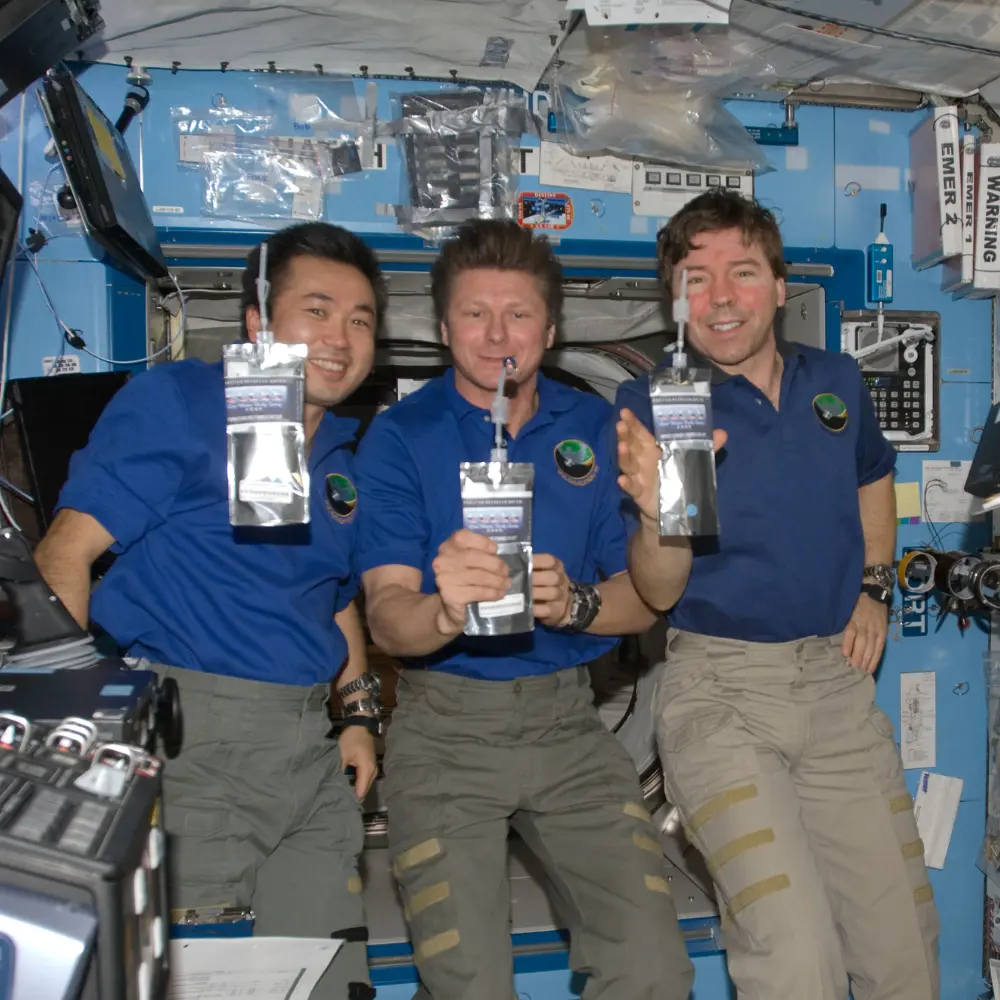
As a result, astronauts often report that food and beverages, including space coffee, taste blander in orbit than they do on Earth. The flavors don’t resonate as much, leading to a less satisfying coffee experience. That’s why space food and beverages often lean towards strong, spicy, and rich flavors – to compensate for this sensory shift.
The Role of Coffee in Maintaining Astronaut Morale
Despite the challenges with taste perception, coffee holds a unique and cherished place in astronauts’ daily routines. The act of sipping coffee, even in space, provides a comforting sense of normalcy in an environment that is anything but normal.

Coffee’s role extends beyond just a caffeine boost. It’s a psychological tether to Earth and a brief respite from the rigors of space missions. The familiar ritual of preparing and drinking coffee can alleviate feelings of isolation and homesickness, contributing significantly to the mental well-being of astronauts.
The Future of Flavor Enhancements in Space Coffee
To combat the dulling of taste in space and to make space coffee more enjoyable, scientists are constantly looking for ways to enhance the flavor of coffee in orbit. Future research and innovations could bring more advanced brewing techniques, flavor enhancement methods, and even special coffee varieties selected or engineered specifically for space brewing.
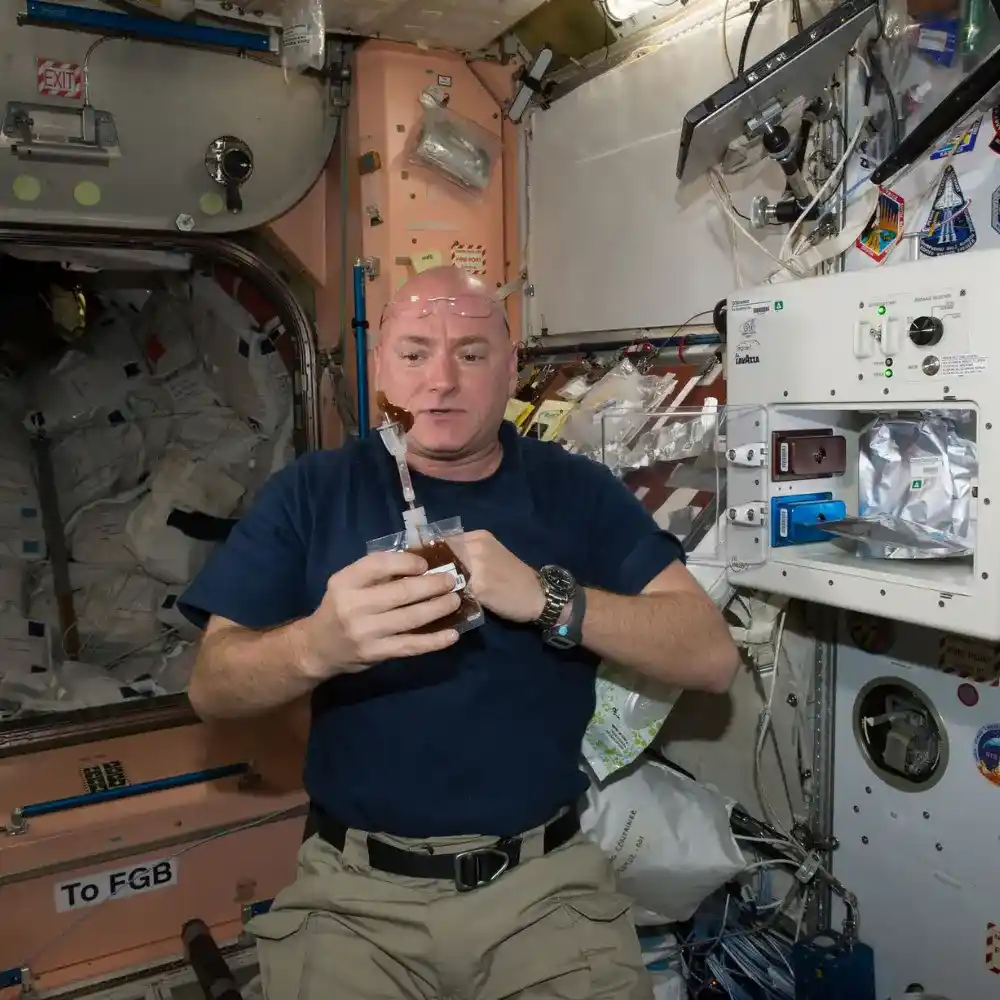
One such possibility might be to use naturally stronger flavored Robusta beans instead of the typical Arabica coffee. Alternatively, research into how to safely and effectively introduce aromatic compounds into the brewing process could result in a richer, more flavorful space coffee.
As we continue to explore the cosmos and enhance our understanding of life in space, the humble cup of coffee, an emblem of our terrestrial lives, will evolve along with us. The ongoing journey of space coffee reveals not just our resourcefulness but our deep-seated desire to carry a piece of home, no matter how far we venture into the unknown.
Sustainability and Coffee in Space
As human ambitions push us further into space, the challenges of sustainability follow closely. The question of sustainable practices extends even to something as simple as our daily cup of coffee. With space coffee, we’re grappling with issues such as waste management, resource conservation, and innovative sustainable solutions.
The Problem of Space Waste and Coffee Packaging
In space, waste management is a major concern, and the single-use nature of space coffee packaging exacerbates this issue. Every cup of coffee consumed in space results in a discarded packet. These packets, along with other waste, have to be stored until they can be sent back to Earth or, in some cases, are released to burn up in Earth’s atmosphere.

Such practices are not only unsustainable, but they also consume valuable space in spacecraft and pose potential contamination risks. With increasing length and frequency of space missions, and with more crew members onboard spacecraft like the ISS, waste management and the environmental footprint of coffee consumption become critical factors.
Innovations in Biodegradable Space Coffee Solutions
To counter the waste issue, scientists and engineers are working on innovative solutions. One such solution is developing biodegradable coffee packets that can be safely composted in space. Although still in the early stages, these efforts hold the promise of a more sustainable coffee-drinking experience in orbit.
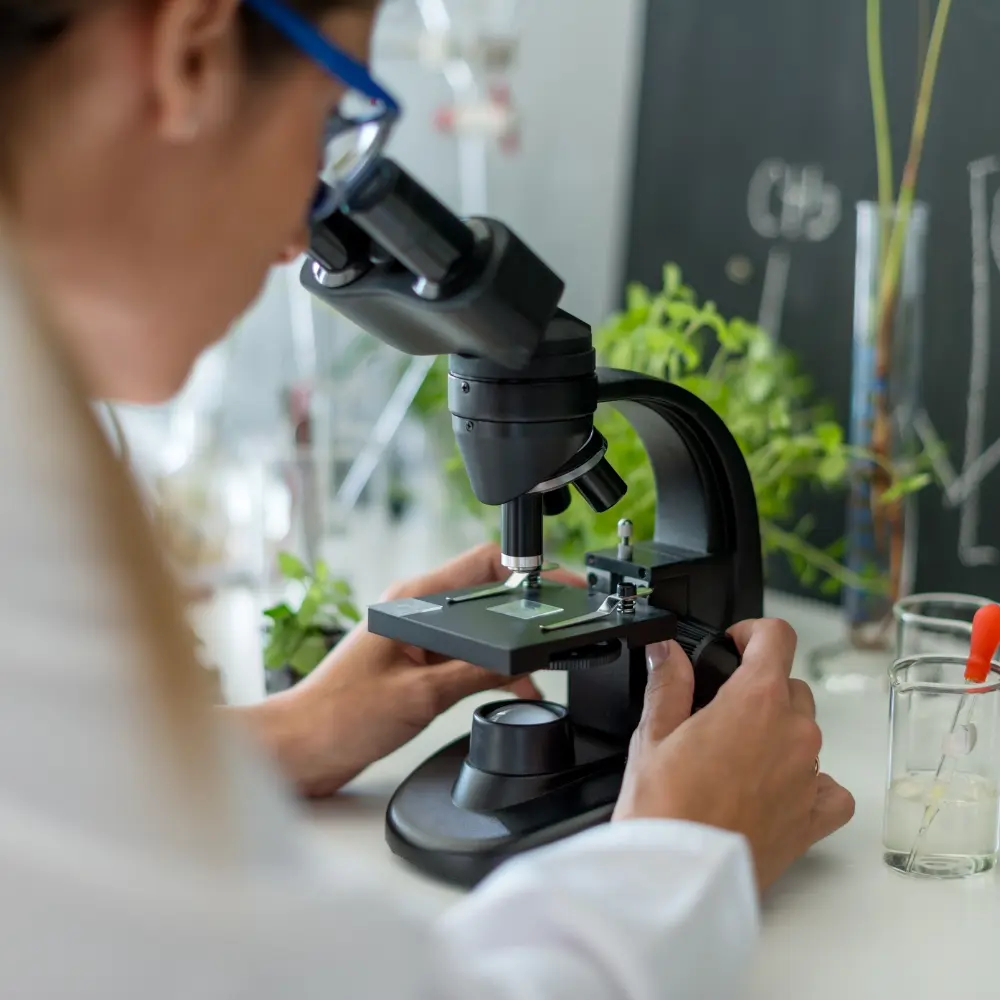
NASA has been actively researching and testing various types of biodegradable materials that can withstand the rigors of space travel and the space environment. (5) The idea is that once used, these materials could be processed in onboard composting systems, transforming waste into useful material – like compost for growing plants on long-duration space missions.
Potential of Closed-Loop Systems for Future Coffee Supplies
A long-term sustainability vision for space missions is the implementation of closed-loop systems. In this scenario, nearly everything onboard a spacecraft would be reused or recycled, minimizing waste and the need for resupply missions. (6)
For space coffee, this could mean growing coffee plants aboard space habitats, utilizing advanced hydroponic or aeroponic systems. The spent coffee grounds could be composted and used to enrich the growth medium, closing the loop.
These exciting possibilities could revolutionize not only space coffee but the entire approach to food and beverage production and consumption on long-duration space missions.
The journey towards a sustainable space coffee experience mirrors our own earthly sustainability challenges. As we devise ways to make our space coffee more environmentally friendly, we also learn valuable lessons that can inform our sustainability practices here on Earth.
The Next Frontier: Future of Coffee in Space Exploration
As our space exploration ambitions continue to grow, moving from space stations to planetary colonies, we take our favorite earthly comforts along. One of these comforts is the simple yet satisfying ritual of brewing and enjoying a cup of coffee. Let’s look at what the future holds for coffee as humanity sets its sights on the Moon, Mars, and beyond.
Exploration of Lunar and Martian Coffee Production
One of the most intriguing prospects for the future of space coffee is the possibility of growing coffee right where it’s consumed – in space. NASA’s Artemis program, aiming to return humans to the Moon and subsequently travel to Mars, paves the way for more sustainable and self-sufficient methods of food and beverage production. (7)
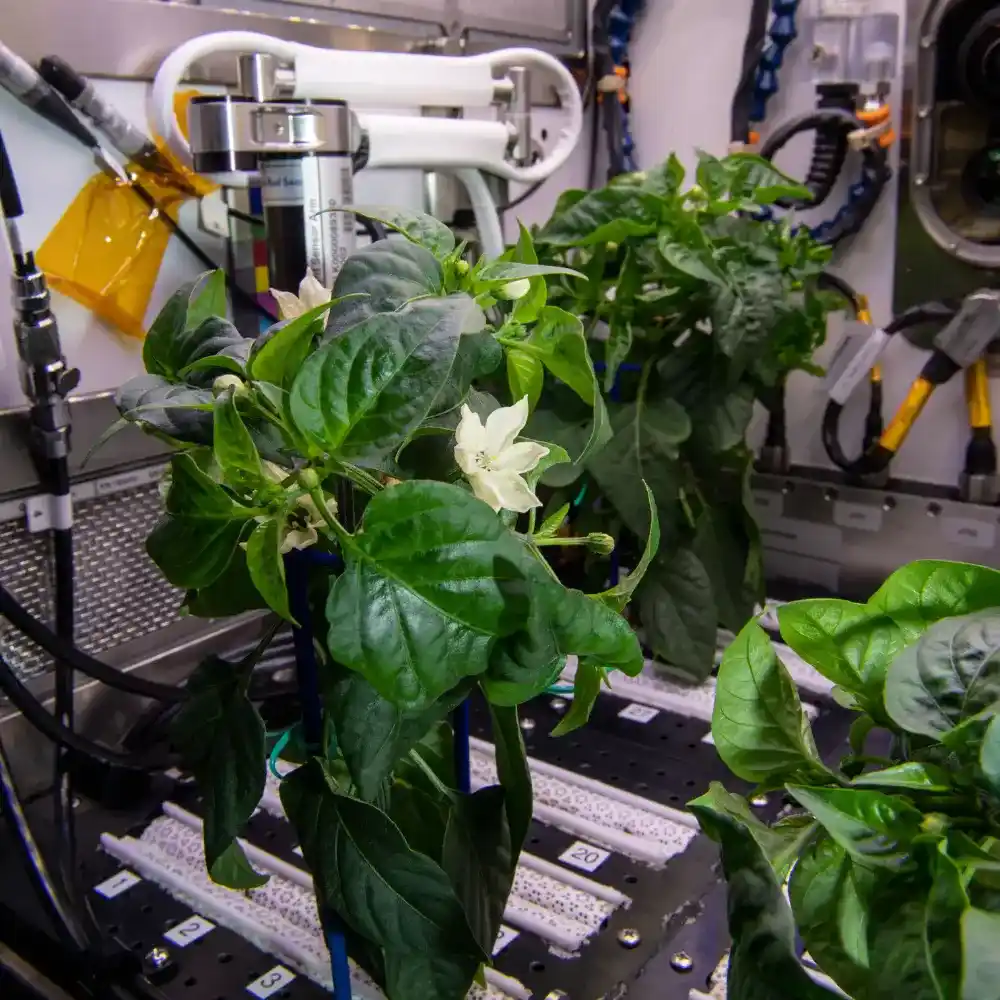
Recent experiments aboard the ISS have demonstrated the potential for growing plants in space, suggesting that one day we might see coffee plants on the Moon or Mars. Overcoming the numerous challenges this would entail—such as creating a suitable growth environment and efficiently using limited resources—would be a game-changer for long-term space missions and colonization.
The Role of Private Space Companies in Future Space Coffee Endeavors
Private space companies have brought new energy and ideas to space exploration, and this extends to space coffee. Companies like SpaceX and others could play a significant role in the future of cosmos brewing.
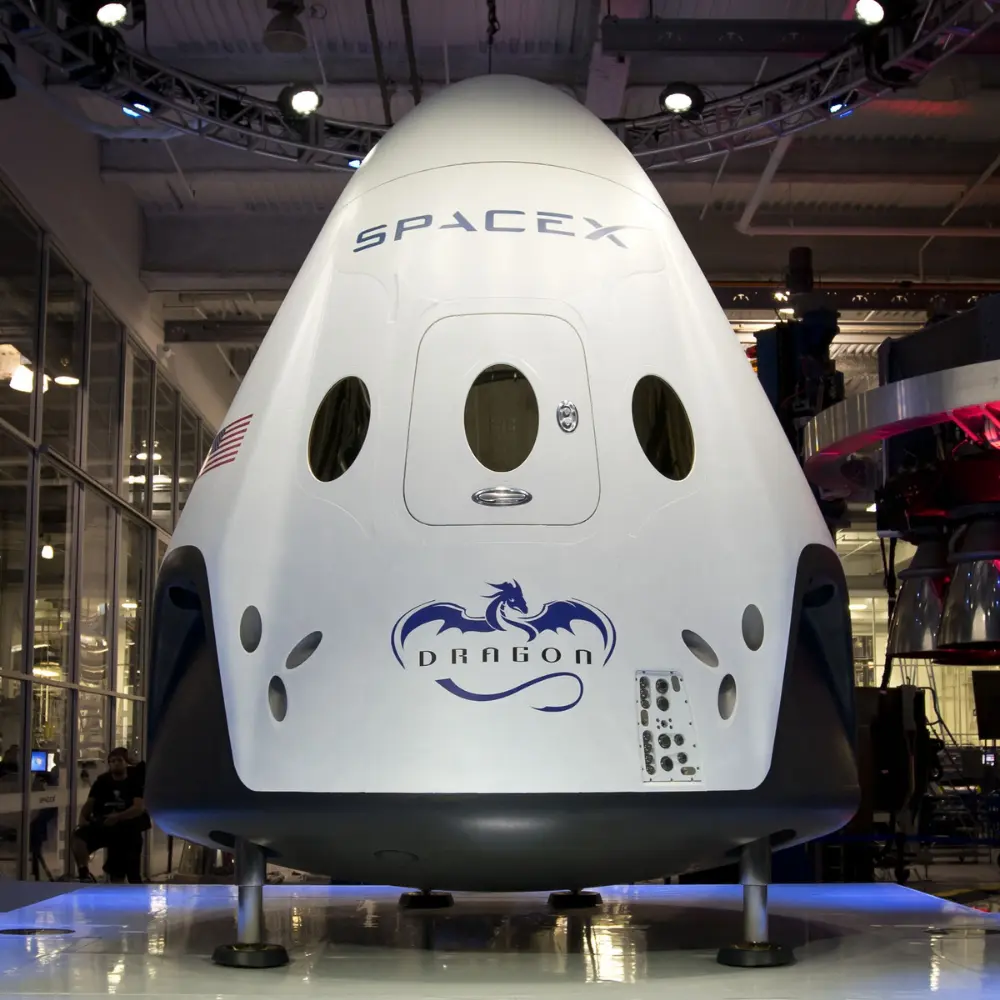
These private companies are pushing the boundaries of what’s possible in space, from reusable rockets to plans for space tourism. As they forge ahead, offering more people the opportunity to experience space, the demand for better space coffee will grow. Private companies could partner with coffee companies, tech startups, and researchers to develop advanced brewing techniques, more sustainable practices, and even create space-specific coffee blends.
The Dream of the First Interplanetary Coffee Shop
While it might seem far-fetched, there’s a dream that captures the imagination of coffee lovers and space enthusiasts alike – the idea of the first interplanetary coffee shop. This would be a place where astronauts, researchers, and space tourists could gather, socialize, and enjoy a cup of freshly brewed space coffee.

Imagine sipping a cup of coffee while gazing at the Earth from the Moon, or watching a Martian sunset. This dream speaks to our longing for familiar comforts and social connection, even millions of miles away from home.
As humanity pushes further into the cosmos, space coffee will continue to evolve, adapt, and improve. Whether it’s brewing a better cup aboard a spacecraft, growing coffee plants on another planet, or opening the first space coffee shop, the future of cosmos brewing is as limitless as space itself.
Conclusion
In conclusion, space coffee and the act of cosmos brewing represent a fascinating intersection of culture, science, and innovation. From the early days of space exploration to modern-day missions, coffee has been a constant companion of astronauts, providing a familiar and comforting ritual in the vast, unfamiliar environment of space.
Throughout this journey, we’ve seen how brewing coffee in space poses unique challenges, from microgravity’s impact on the brewing process and taste perception to waste management concerns. Yet, these challenges have spurred innovative solutions, from specially designed coffee machines and cups to biodegradable materials and the dream of closed-loop systems.
As we stand on the brink of a new era in space exploration, with lunar colonies and Martian missions in our sights, the role of coffee becomes even more vital. Private companies, space agencies, and researchers are all playing their parts in the future of space coffee, whether through the prospect of growing coffee plants on other planets or the exciting idea of the first interplanetary coffee shop.
In essence, space coffee is more than just a beverage; it’s a symbol of our adaptability, our relentless pursuit of comfort and normalcy in extreme environments, and our shared humanity. As we continue to push the boundaries of space exploration, the story of cosmos brewing will evolve along with us, reflecting our journey as we take this humble, earthly ritual to the stars and beyond.
FAQ
How does zero gravity affect the process of brewing and drinking coffee?
Zero gravity affects the process of brewing and drinking coffee by altering the behavior of fluids, making it difficult to control water and brewed coffee. Specialized equipment like the ISSpresso machine and specially designed coffee cups are used to overcome these challenges.
Why is the taste of coffee different in space?
The taste of coffee is different in space because microgravity conditions cause a shift in bodily fluids, leading to a condition similar to congestion. This can dull the senses of taste and smell, making food and beverages taste blander than on Earth.
What efforts are being made to make space coffee more sustainable?
Efforts to make space coffee more sustainable include developing biodegradable coffee packaging that can be composted in space, and envisioning closed-loop systems where everything is reused or recycled, possibly even growing coffee plants on board space habitats.
Could we ever grow coffee beans on other planets?
While currently speculative, growing coffee beans on other planets, like Mars or the Moon, is a possibility that researchers are considering. The success of this would depend on numerous factors, including creating a suitable growth environment and efficiently using resources.













